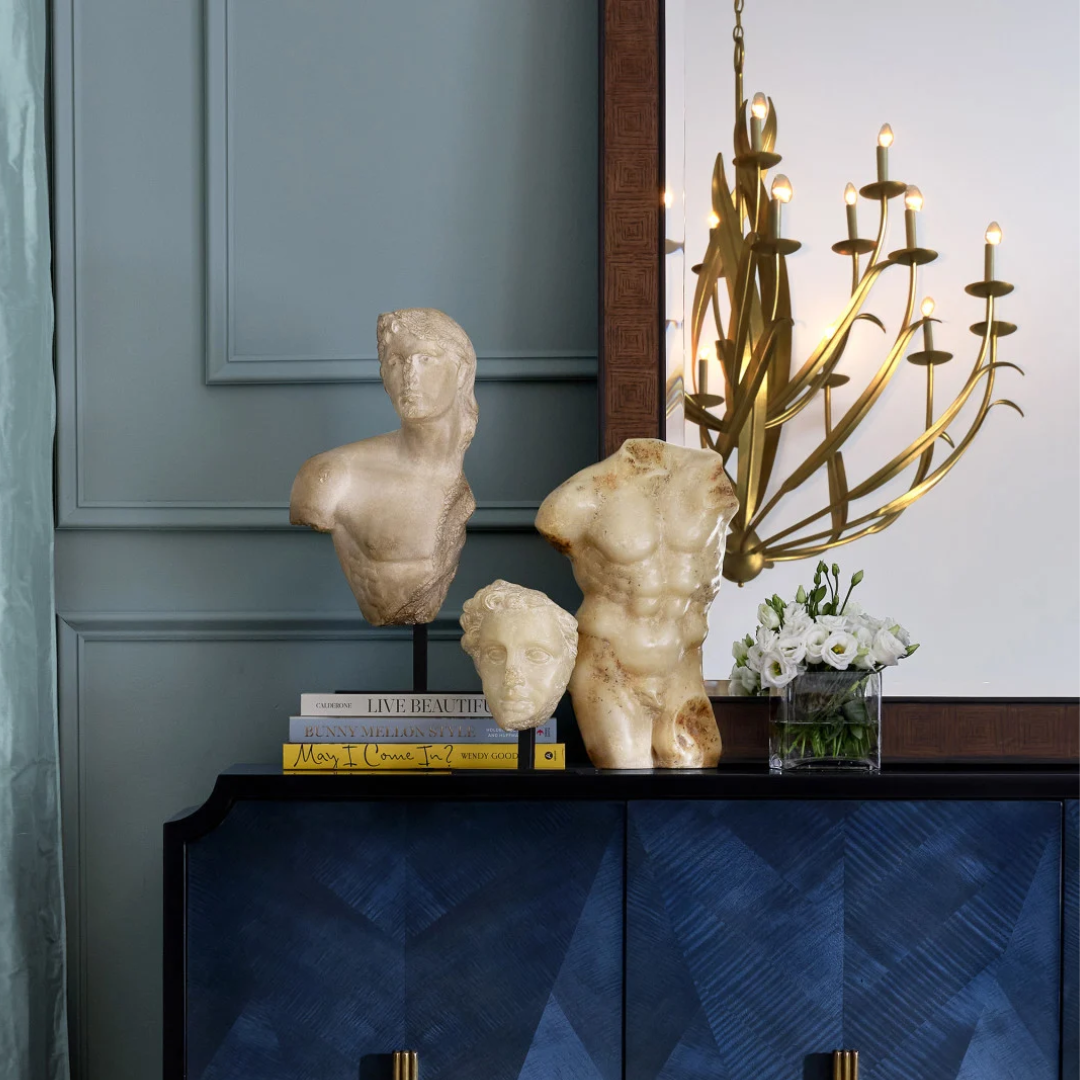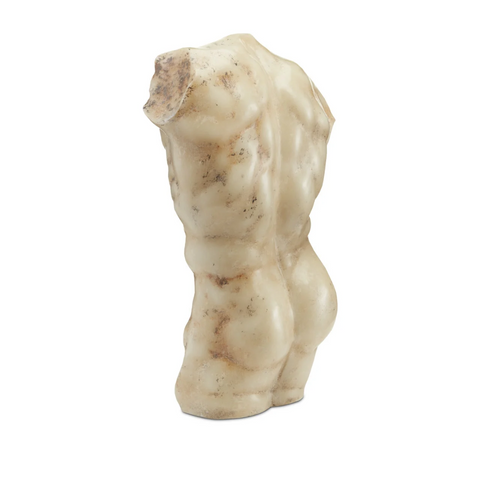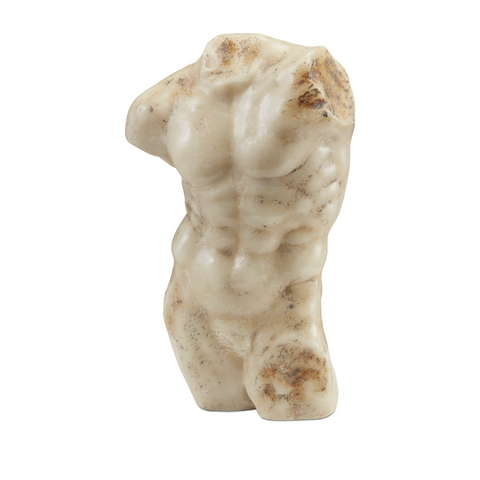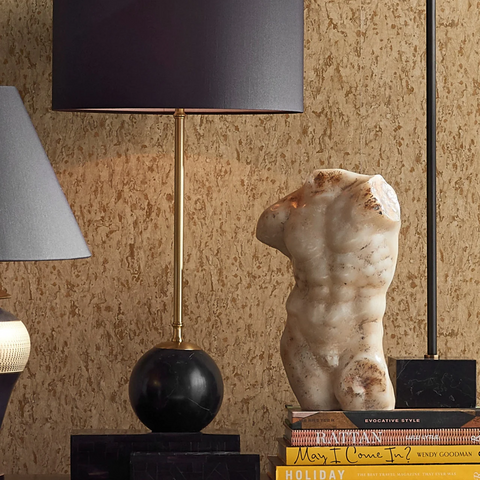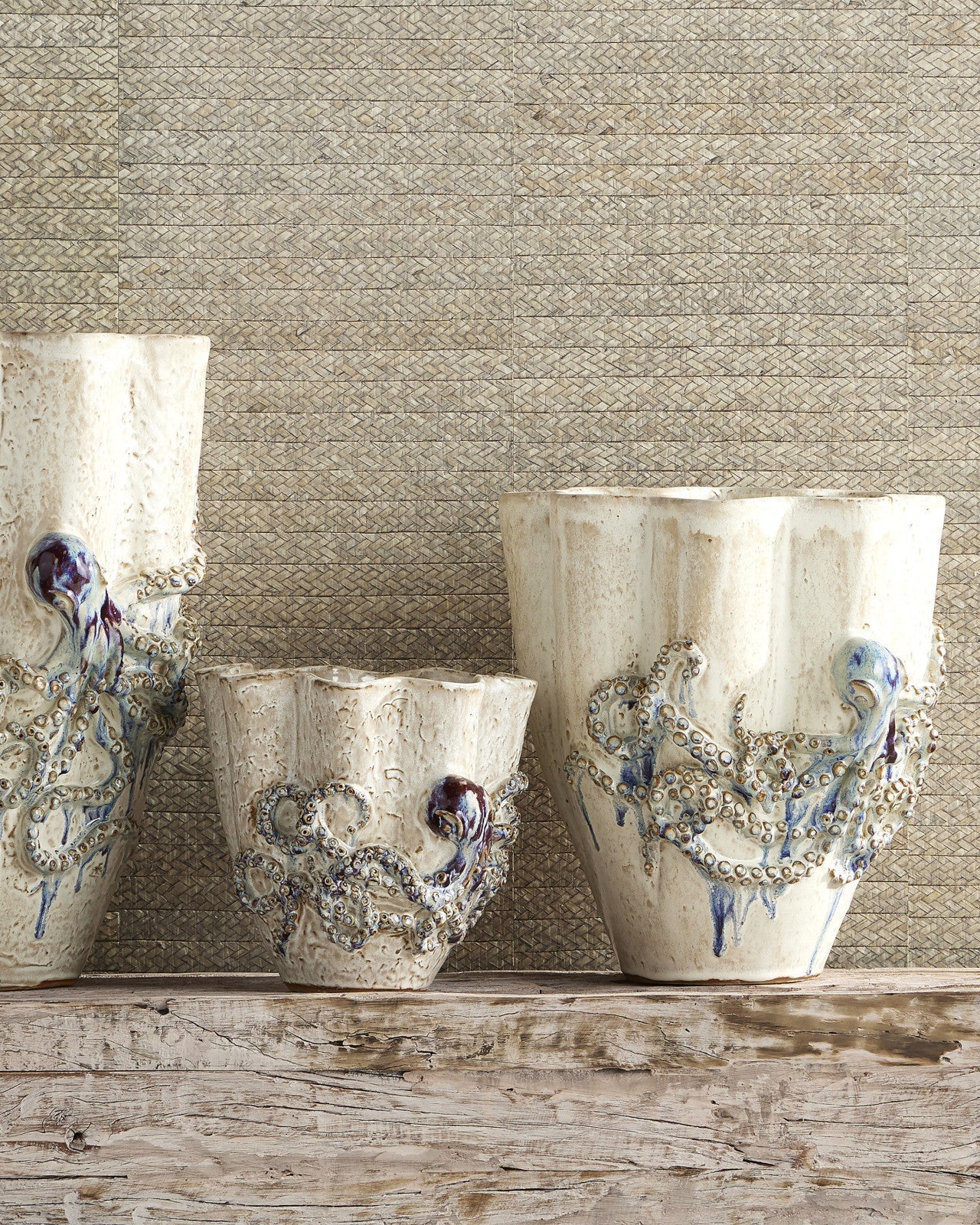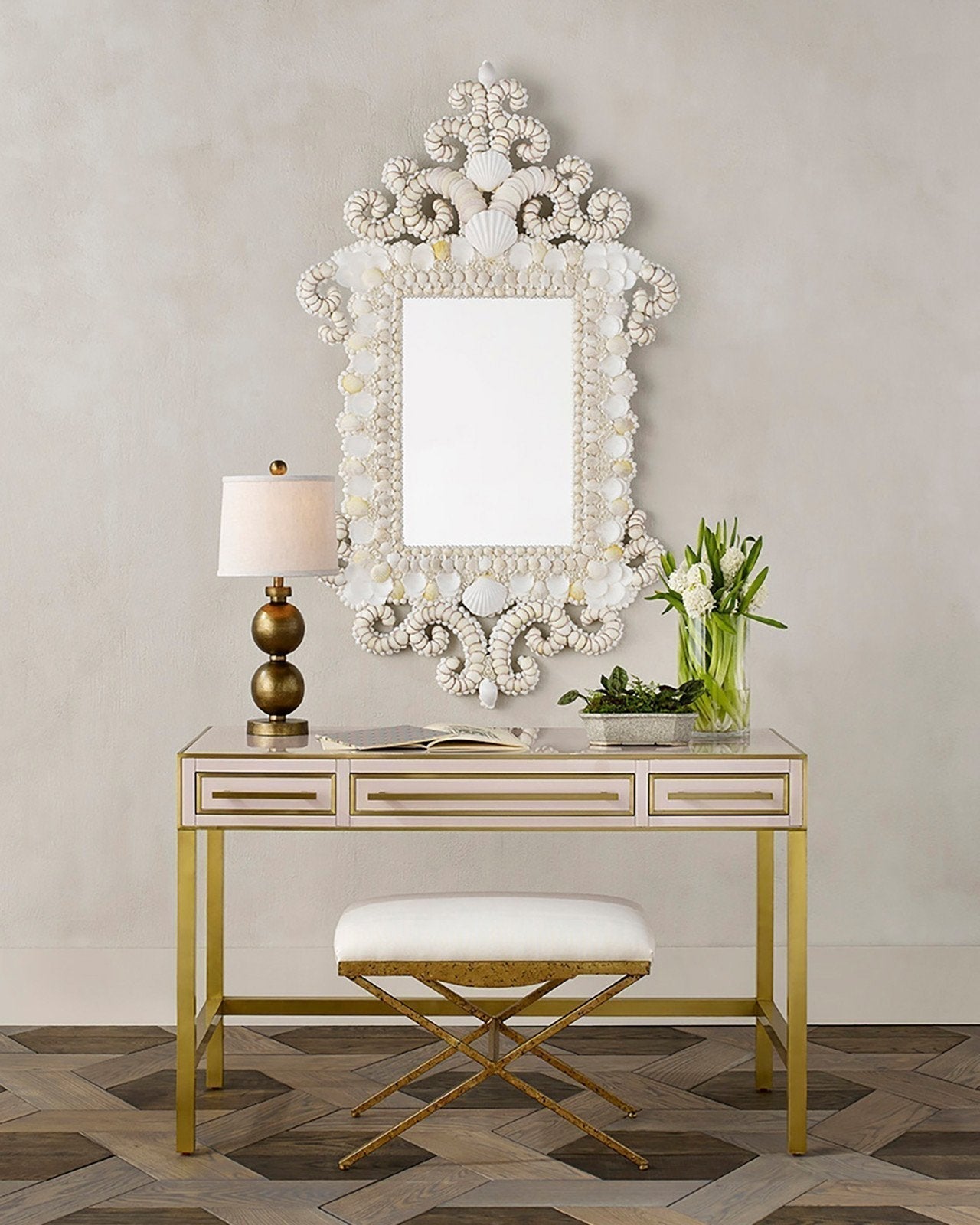The Timeless Art of Torso Sculptures
The Timeless Art of Torso Sculptures: A Look Through History
An Evening of Art and Elegance: The Symposium at an Athenian Merchant's Home
The Timeless Art of Torso Sculptures
An Evening of Art and Elegance Continued...
Detailed Historical Context
Expand on Ancient Techniques
The craft of sculpting torso sculptures in ancient Greece evolved remarkably from the Archaic to the Hellenistic periods, showcasing a progressive mastery of form and detail that has captivated art enthusiasts for centuries. Initially, sculptors in the Archaic period utilized simple tools such as iron chisels, hammers, and wooden mallets, and their early works were characterized by stiff, frontal poses typical of the Kouroi and Korai statues.
However, as the classical period dawned, technological and artistic innovations led to the development of more sophisticated tools and techniques, including bronze chisels and the use of drills, which allowed for greater detail and more dynamic figures. This period saw a shift towards the 'contrapposto' stance, introducing a sense of movement and realism previously unseen. By the Hellenistic era, Greek sculptors had perfected the portrayal of intricate anatomical details. Such as the tensing of muscles and the texture of skin, giving life to marble in unprecedented ways.
Famous Sculptors
Among the luminaries of ancient Greek sculpture were Phidias and Praxiteles. Whose works defined the pinnacle of sculptural art during their respective eras. Phidias, known for his colossal statues of deities, notably oversaw the sculptural decoration of the Parthenon, which includes several iconic torso sculptures. His ability to depict the gods with majesty and power yet accessible humanity set a new standard in sculptural art. Praxiteles, who flourished during the later classical period, introduced a softer, more intimate approach to his sculptures. His works, such as the Hermes and the Infant Dionysus, are celebrated for their naturalistic portrayal of the human body. The subtle suggestion of movement, characteristics that made his sculptures feel almost alive. Praxiteles' innovation in creating slight shifts in posture and his mastery in rendering the human anatomy significantly influenced how torsos were sculpted. Highlighting a blend of idealism and realistic observation.
Torso Treasures: The Birth of Classical Sculpture
The tradition of sculpting torsos and busts can be traced back to ancient civilizations, most notably the Greeks and Romans. Historically, these early examples of torso sculpture décor served both artistic and cultural purposes. They often depicted deities, philosophers, and societal leaders. The Greeks pioneered the art of sculpting the human form with astonishing realism, a tradition that the Romans continued and popularized. Additionally, Roman bust statues, particularly, became a staple in public and private domains. They symbolized power and prestige. Notable for their detailed representation of garments and facial expressions. These sculptures were primarily carved from marble, standing the test of time as epitomes of classical art.
Revival and Relevance: Renaissance Boost and Beyond
Most importantly, the Renaissance marked a profound revival of classical sculpture. Central to this resurgence were visionary artists like Michelangelo and Donatello, who emphasized anatomical precision and emotional depth in their marble creations. Particularly noteworthy is Michelangelo's 'David,' a full figure that, along with his busts and unfinished works, showcases his extraordinary skill. Furthermore, their contributions solidified the bust as a fundamental form of artistic portraiture during this period. Additionally, the era's focus on humanism greatly enhanced the appeal of bust sculptures, embodying intellectual and aesthetic ideals in décor.
Influence on Later Artistic Movements
The Renaissance not only rekindled appreciation for classical forms but also set a foundation that influenced numerous subsequent artistic movements. The detailed study of human anatomy and the emotional expressiveness championed by Renaissance artists like Michelangelo and Donatello echoed through the ages. Notably shaping the Baroque period's dynamic compositions and the Romantic era's focus on individual expression and emotion. These artists' dedication to replicating human emotions and physical accuracy became a cornerstone of Western art education. Perpetuating a legacy that emphasized the observation of the natural world as a source of inspiration. The practice of creating busts, which began as a way to capture the visages of influential figures and gods, evolved to include a broader representation of society. Including emerging middle-class patrons who desired to immortalize their own likenesses in the style of the nobility.
Modern Resurgence and Contemporary Significance
In contemporary settings, the principles of Renaissance sculpture continue to resonate. As modern artists and sculptors revisit classical themes with new materials and technologies. The resurgence of interest in figurative art and the human form can be seen in exhibitions around the globe. Where traditional techniques are applied to create works that speak to modern social and cultural issues.
Furthermore, the representation of torsos and busts has shifted in modern decor from purely aesthetic objects to symbols of cultural and historical narratives, offering a bridge between the past and present. This adaptability underscores the enduring relevance of Renaissance techniques, proving that the art of sculpting torsos and busts is not static but continually evolving. Today, artists like Damien Hirst and Jeff Koons draw on the legacy of the Renaissance to explore themes of identity and human experience, thus ensuring that the art form remains vital and relevant in the digital age.
Contemporary Echoes of Ancient Forms
As we trace the lineage of torso sculptures from the ancients to the present, it's evident that these art forms continue to resonate within contemporary art and design. Modern public installations and the works of notable contemporary artists reflect a renewed interest in the classical ideals of form, proportion, and the human condition, often reinterpreted through a modern lens.
-
Public Installations and Urban Spaces:
- In major cities around the globe, public installations featuring torso sculptures invite passersby to interact with history in fresh and immersive ways. For instance, Antony Gormley’s "Event Horizon" installation scattered cast iron bodies, including torsos, across city rooftops and sidewalks, creating a dialogue between the human form and the urban landscape. This installation not only revisits the classical fascination with the human body but also challenges viewers to consider their own place within the modern metropolis.
- Similarly, the installation of torso sculptures in the Olympic Sculpture Park in Seattle blends ancient motifs with contemporary design, using materials like weathered steel to mirror the patina of aged bronze sculptures. These installations offer a bridge between the past and present, providing a serene yet poignant commentary on the endurance and evolving interpretations of human forms.
-
Contemporary Artists Drawing on Classical Inspirations:
- Artists like Damien Hirst and Jeff Koons have revisited the concept of the torso in their works, though often with a twist that speaks to contemporary themes. Hirst's "The Anatomy of an Angel" shows a classical figure in half-dissection, revealing the juxtaposition of idealized external forms with the biological reality of human anatomy. This work echoes the ancient fascination with the human body while engaging with modern scientific and philosophical discussions about the nature of human beings.
- Jeff Koons’ “Gazing Ball” series involves plaster sculptures that include classical torsos holding shimmering blue orbs. The series invites reflection on the viewer's own perception and the interplay of visual perspectives, blending ancient sculptural techniques with modern materials and themes.
-
Integration in Modern Architectural Design:
- Beyond freestanding sculptures, torso forms have influenced architectural elements and interior design. In luxury residences and high-profile corporate buildings, elements of classical torsos can be found in decorative facades, ornate lobbies, and landscaped gardens, symbolizing both a nod to classical aesthetics and a mark of contemporary luxury.
Modern Appeal: Decorative Busts in Contemporary Spaces
Today, busts and torso sculptures have transcended their classical roots to become versatile elements in home décor. Modern adaptations vary in material from traditional marble to resins and metals, catering to a broader aesthetic palette. Greek and Roman bust sculptures bring historical sophistication to modern spaces, blending classical and contemporary designs. As art becomes more accessible, buying busts online has spread their appeal globally, sustaining this splendid art form's legacy.
Integration into Modern Design and Pop Culture
In today's design landscape, busts and torso sculptures are not merely remnants of a bygone era. They have been seamlessly integrated into diverse interior styles, from minimalist modern to eclectic bohemian. Designers frequently use these sculptures as focal points in rooms. Where they serve as conversation starters and lend an air of intellectualism and taste. Moreover, the influence of these classical forms extends beyond the confines of traditional home decor. They are increasingly featured in popular media, fashion, and photography. This trend reflects a broader cultural shift where historical art forms are reimagined in contemporary contexts. Making them relevant to a new generation of enthusiasts. This fusion of old and new helps maintain the relevance of classical aesthetics in today's digitally, fast-paced world.
Sustainability and Innovation in Materials
As sustainability becomes a pressing concern, the materials used in creating busts and torso sculptures have also evolved. Artists and manufacturers now frequently opt for eco-friendly materials like recycled metals, biodegradable resins, or sustainably sourced stones. These innovations not only cater to environmental concerns. But, also offer new textures and finishes that challenge the traditional perceptions of sculpture. This shift is accompanied by technological advancements such as 3D printing. Which allows for more precise reproductions and the ability to customize pieces for individual buyers. Such technological integration ensures that the art of sculpture is continually evolving. Adapting to modern needs while still drawing on its rich historical lineage.
Symbolic Significance and Thematic Interpretations
Torso sculptures, transcending mere artistic expression, have often embodied deeper symbolic meanings across various cultures and epochs. In ancient civilizations, these sculptures were not solely decorative but served as potent symbols of divine or heroic ideals. For instance, the Greeks often depicted gods and athletes in their torso sculptures. Emphasizing attributes such as strength and serenity, reflecting the cultural admiration for physical perfection and moral virtue.
In the Renaissance, the revival of classical torso sculptures was also a nod to humanist ideals. Celebrating the rediscovery of classical philosophies that emphasized human reason and aesthetics. Artists like Michelangelo captured this blend of physical beauty and intellectual depth. Embedding these values into the very marble from which they sculpted.
Moving into contemporary interpretations, torso sculptures continue to serve as a medium for expressing complex themes. Themes such as identity, memory, and time. Modern artists might reinterpret classical motifs or deconstruct traditional forms to comment on contemporary issues. Including discussions about body image, gender, and societal standards. For instance, a sculptor might create fragmented torsos that speak to themes of loss and recovery. Or abstract the human form to reflect modern existential anxieties.
Try This: Elevate Your Space with an Ancient Greek Torso
Refined Integration of Ancient Grace into Modern Decor
As you seek to elevate the sophistication and allure of your chic home vibe, consider the transformative power of placing an Ancient Greek Torso as the centerpiece of your decor. These stunning sculptures are not merely decorative items, they serve as compelling focal points. That infuse any room with a sense of history and artistic excellence, sparking lively conversations among your guests. Whether you opt for the luxurious detail of a Currey & Co piece or prefer the elegantly affordable Sagebrook Home version, each sculpture is poised to effortlessly elevate your space. Visit ChicHomeVibes.com to explore how these timeless pieces can introduce a layer of sophistication and warmth to your environment. Incorporating a torso or bust into your home decor not only enhances the aesthetic but also turns your living space into a living museum, a testament to beauty and history.
Creating a Narrative with Classical Sculptures in Contemporary Settings
Integrating classical sculptures such as the Ancient Greek Torso into modern interiors goes beyond mere decoration. It's about crafting a narrative that resonates with cultural richness and timeless elegance. These pieces act as bridges, connecting the past with the present. Inviting those who enter your home to journey through time. They provoke curiosity and appreciation for the artisanship of ancient civilizations. While their robust forms and textures contrast beautifully against softer, more modern design elements, creating a dynamic visual dialogue.
By choosing to adorn your space with such iconic artifacts, you not only pay homage to historical craftsmanship. But, also create an environment where art and functionality converge to tell stories of eras long past. Additionally, positioning these sculptures in strategic locations within your home. Such as in a grand foyer or at the end of a well-lit hallway, can transform everyday pathways into gallery-like experiences, making every walkthrough a moment of discovery.
Want more? Find out how the Ancient Greek Sculptures were a major influence on the development of Western arts here on a blog post from TheCollector.com
